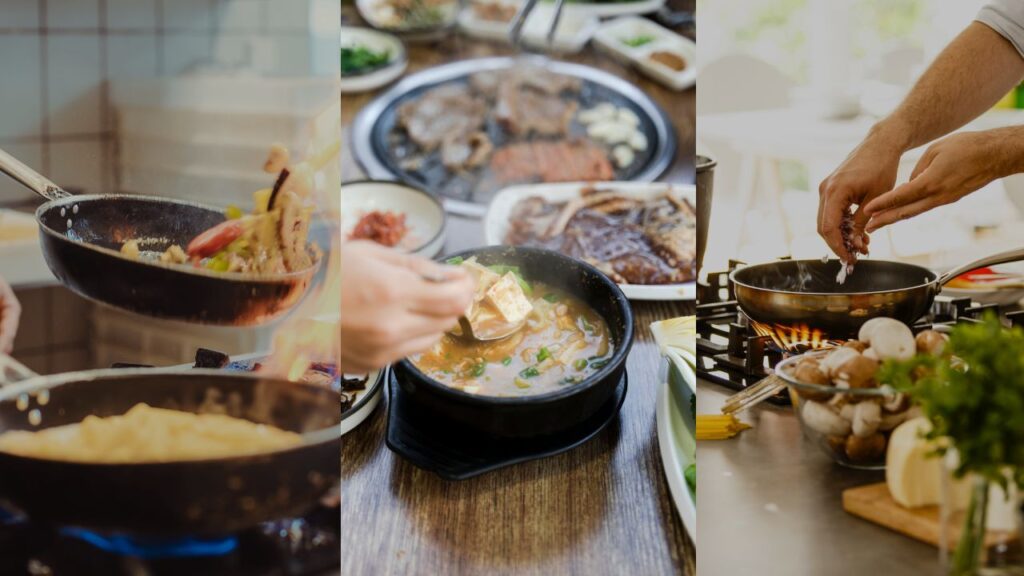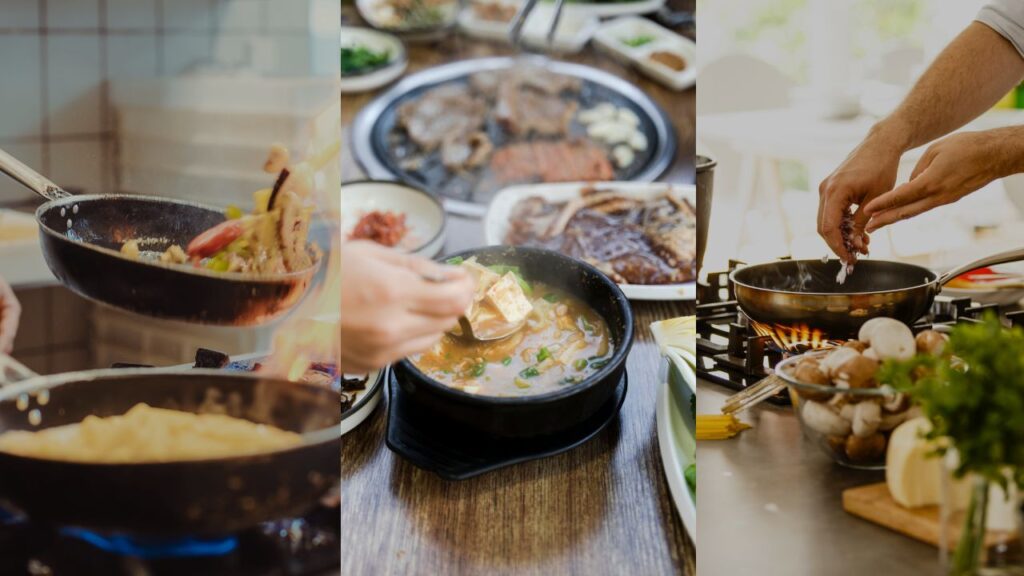
Have you ever sat down with a steaming bowl of soup or stew, only to find it a bit too runny for your liking? Thickening soups and stews can transform a simple dish into a hearty, satisfying meal. Whether you’re aiming for that perfect creamy consistency or looking to add more body without extra calories, there are numerous techniques to achieve the ideal texture. Let’s dive into the best ways to thicken soups and stews, ensuring your culinary creations are both delicious and perfectly textured.
Contents
Understanding Soup and Stew Consistency
Ideal Thickness Levels
When it comes to soups and stews, consistency is key. The ideal thickness can vary depending on the type of dish and personal preference. For example, a creamy bisque should be velvety smooth, while a hearty beef stew benefits from a robust, chunky texture. Visual and textural indicators can help you determine if your soup or stew has reached the desired thickness. A thicker soup typically coats the back of a spoon and feels rich, whereas a thinner soup has a more broth-like consistency.
Factors Affecting Thickness
Several factors influence the thickness of your soup or stew:
- Ingredients Used: Starchy vegetables like potatoes or beans can naturally thicken a dish.
- Cooking Time and Temperature: Simmering longer allows more liquid to evaporate, reducing the overall volume and thickening the consistency.
- Liquid-to-Solid Ratio: Adjusting the amount of liquid relative to solids can directly impact thickness.
Traditional Thickening Methods
Using Flour
Flour is a classic thickening agent that’s both versatile and effective.
How to Make a Roux
A roux is a mixture of equal parts flour and fat (usually butter) cooked together to form a paste. Here’s how to make it:
- Melt butter in a saucepan over medium heat.
- Stir in an equal amount of flour.
- Cook, stirring constantly, until the mixture is golden brown.
Pros and Cons of Using Flour
Pros:
- Adds a rich, hearty texture.
- Enhances flavor with a slightly nutty taste.
Cons:
- Can make the soup cloudy.
- Requires careful mixing to avoid lumps.

Cornstarch Slurry
Cornstarch is another popular thickener known for its smooth results.
Step-by-Step Guide to Creating a Slurry
- Mix cornstarch with cold water in a 1:1 ratio.
- Stir until fully dissolved.
- Gradually add the slurry to your simmering soup or stew, stirring constantly.
When to Add It During Cooking
Add the slurry towards the end of the cooking process, as prolonged cooking can break down the cornstarch and reduce its thickening power.
Beurre Manié Technique
Beurre manié, similar to a roux, uses raw butter and flour.
Mixing Butter and Flour
- Combine equal parts softened butter and flour in a bowl.
- Knead until it forms a smooth paste.
Application in Soups and Stews
Whisk small amounts into your simmering dish until the desired thickness is achieved.
Alternative Thickening Agents
Pureed Vegetables
Pureed vegetables not only thicken but also add nutrients and flavor.
Types of Vegetables Suitable for Pureeing
- Potatoes
- Carrots
- Cauliflower
- Butternut squash
Adding Puree to Enhance Flavor and Texture
Simply blend cooked vegetables until smooth and stir them into your soup or stew. This method is perfect for adding a natural sweetness and creamy texture.
Beans and Lentils
Legumes are fantastic for thickening and boosting protein content.
Benefits of Using Legumes as Thickeners
- Nutrient-Rich: High in fiber and protein.
- Flavor Enhancing: Adds depth and earthiness to dishes.
Recipes Incorporating Beans and Lentils
Try adding mashed white beans to a vegetable soup or blending lentils into a hearty beef stew for extra thickness and nutrition.
Starchy Vegetables
Starchy vegetables like potatoes and sweet potatoes can naturally thicken your dishes.
Potatoes, Sweet Potatoes, and Their Thickening Properties
These vegetables release starch as they cook, which helps to thicken the liquid.
Incorporation Methods
Dice and cook them directly in the soup or stew, then mash a portion and stir it back in for a creamy texture.
Dairy-Based Thickening Options
Cream and Half-and-Half
Dairy adds both richness and thickness to your dishes.
How Dairy Adds Richness and Thickness
Cream and half-and-half contribute a luxurious texture and enhance the overall flavor profile.
Adjusting Quantities for Desired Consistency
Start with a small amount and gradually add more until you reach the desired thickness.
Greek Yogurt and Sour Cream
These tangy dairy products can create a creamy consistency without the heaviness of cream.
Using Yogurt for a Tangy Flavor and Creamy Texture
Stir in Greek yogurt or sour cream at the end of cooking for a smooth, tangy finish.
Tips to Prevent Curdling
Temper the yogurt by mixing it with a bit of the hot liquid before adding it to the soup or stew.
Coconut Milk
A vegan-friendly alternative that adds a subtle coconut flavor.
Vegan-Friendly Dairy Alternative
Perfect for those avoiding dairy, coconut milk provides a creamy texture without animal products.
Enhancing Soups with Coconut Flavor
Use light or full-fat coconut milk depending on the desired richness, and balance the flavor with complementary spices.
Gluten-Free and Vegan Thickening Solutions
Arrowroot and Tapioca Starch
These starches are excellent for gluten-free cooking.
Properties and Usage in Gluten-Free Cooking
Arrowroot and tapioca starch create a clear, glossy finish and are ideal for thickening without altering the flavor.
| Thickener | Best For | Pros | Cons |
|---|---|---|---|
| Arrowroot | Clear soups, delicate flavors | Neutral taste, glossy finish | Less effective in dairy-based soups |
| Tapioca Starch | Hearty stews, fruit soups | Adds chewiness, gluten-free | Can become gummy if overcooked |
Nut Butters and Ground Nuts
Nut butters add both thickness and a rich, nutty flavor.
Almond, Cashew, and Other Nut Butters as Thickeners
Stir in a spoonful of almond or cashew butter to naturally thicken your dish while adding depth.
Balancing Flavors When Using Nuts
Choose nut butters that complement the dish’s flavor profile and use sparingly to avoid overpowering other ingredients.
Chia Seeds and Flaxseeds
These seeds can create a gel-like consistency to thicken dishes.
Gel-Forming Properties for Thickening
When soaked in liquid, chia seeds and flaxseeds expand and form a gel, effectively thickening your soup or stew.
Additional Nutritional Benefits
Both seeds are rich in omega-3 fatty acids and fiber, adding nutritional value to your meals.

Quick and Easy Thickening Tips
Reducing the Liquid
Simmering is one of the simplest ways to thicken your dish naturally.
Simmering to Evaporate Excess Liquid
Allow your soup or stew to simmer uncovered, letting the liquid reduce and concentrate the flavors.
Managing Cooking Time to Prevent Over-Reduction
Keep an eye on the pot to ensure the liquid doesn’t reduce too much, making the dish too thick or salty.
Adding Instant Thickening Powders
Commercial thickening agents can be a lifesaver for a quick fix.
Commercial Options and Their Effectiveness
Products like instant potato flakes or pre-mixed thickening powders can quickly thicken your dish without much effort.
Utilizing Leftover Ingredients
Get creative with what you have on hand to thicken your soups and stews.
Creative Ways to Use Pantry Staples for Thickening
Ingredients like oats, breadcrumbs, or even leftover bread can be blended into your soup to add thickness and texture.
Balancing Flavor with Thickness
Adjusting Seasonings After Thickening
Thickening can sometimes dilute flavors, so it’s essential to adjust seasonings accordingly.
Ensuring Flavors Remain Harmonious
Taste your dish after thickening and add more spices or herbs as needed to maintain a balanced flavor profile.
Avoiding Over-Thickening
Achieving the perfect balance between thickness and liquid is crucial.
Techniques to Achieve the Perfect Balance
Add thickening agents gradually and keep tasting until you reach the desired consistency without overwhelming the dish.
Enhancing Depth with Herbs and Spices
Use herbs and spices to complement the thickening method and elevate the overall flavor.
Complementing Thickening Methods with Flavor Enhancers
Fresh herbs like thyme or bay leaves can add depth, while spices like paprika or cumin enhance the richness of your soup or stew.
Troubleshooting Common Issues
Preventing Clumps
Clumpy soups and stews are a common issue when thickening.
Proper Mixing Techniques for Smooth Consistency
Always mix thickening agents like flour or cornstarch with a cold liquid before adding to the hot dish, and stir continuously to prevent lumps.
Correcting Over-Thickened Soups
If your soup or stew becomes too thick, don’t worry—it’s easy to fix.
Adding Liquid to Achieve Desired Thickness
Gradually add broth, water, or milk, stirring continuously until you reach the perfect consistency.
Managing Flavor Changes
Altering the consistency can sometimes affect the flavor balance.
Maintaining Taste Integrity When Altering Consistency
Ensure that any additions, like dairy or pureed vegetables, complement the existing flavors rather than overpowering them.
FAQs
What are the healthiest ways to thicken soups?
Using pureed vegetables, beans, or lentils are among the healthiest thickening methods, as they add nutrients without extra calories or processed ingredients.
Can you thicken soups without altering the flavor?
Yes! Ingredients like cornstarch slurry or arrowroot can thicken your soup without significantly changing its flavor.
What is the best thickener for tomato-based soups?
Tomato-based soups pair well with roux, pureed vegetables, or a splash of cream to enhance their natural flavors while adding thickness.
How do you thicken a soup without adding calories?
Opt for pureed vegetables or reduce the liquid through simmering. These methods add thickness without significantly increasing calorie content.
Are there gluten-free options to thicken stews?
Absolutely! Arrowroot, tapioca starch, and cornstarch are excellent gluten-free thickeners that work well in stews.
Conclusion
Thickening soups and stews is both an art and a science, offering endless possibilities to customize your dishes to perfection. From traditional methods like roux and cornstarch slurry to innovative alternatives like pureed vegetables and chia seeds, there’s a thickening technique to suit every palate and dietary need. Experimenting with different thickeners not only enhances the texture but also elevates the flavor, making your meals more satisfying and enjoyable. So next time you’re simmering a pot of your favorite soup or stew, try one of these methods and savor the delicious results. Happy cooking!

